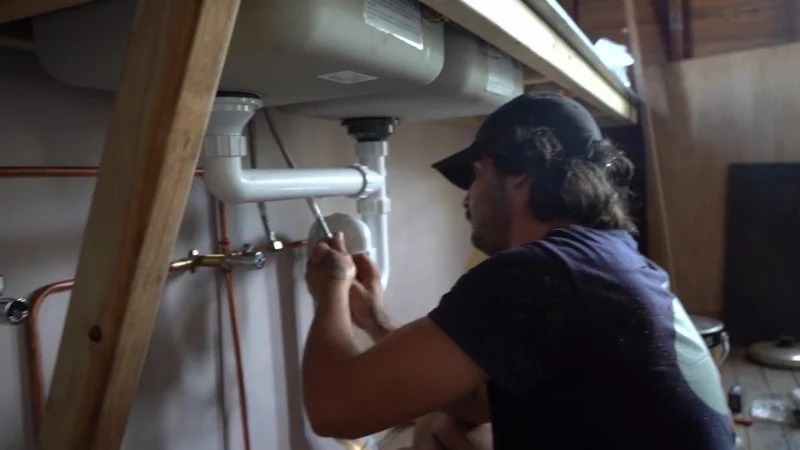
- -How-to-Inspect-Plumbing-After-a-Flood-Event-
- -Identifying-Plumbing-Issues-Post-Flood-
- -Step-by-Step-Guide-to-Plumbing-Inspection-After-Flooding-
- -Signs-Your-Plumbing-Was-Affected-By-Flood-Damage-
- -When-to-Call-a-Plumber-for-Flood-Damage-
- -Using-Plumbers-Supply-Hub-For-Quality-Plumbing-Products-
1. How to Inspect Plumbing After a Flood Event
Flooding can cause significant damage to a home, and one of the most vulnerable areas is your plumbing system. Water can seep into pipes, damage fixtures, and cause long-term issues if not addressed quickly. In this guide, we’ll explain how to inspect your plumbing after a flood event, highlight the signs of potential damage, and offer expert advice on when to call a professional plumber for help.
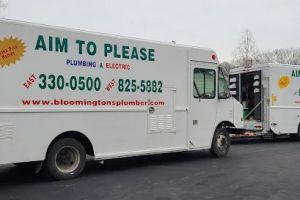
Aim to Please Plumbing & Electric
BloomingtonMonroe CountyIndiana
5115 S Harmony Rd, Bloomington, IN 47403, USA
1.1 Why Inspecting Plumbing After a Flood is Crucial
Plumbing systems are designed to handle the pressures of normal water flow, but floodwaters can be unpredictable. Floodwater often contains debris, sewage, and contaminants, which can cause corrosion, clogs, or even leaks in pipes. Early detection of any plumbing issues can prevent more severe damage, mold growth, and expensive repairs later on.
1.2 Key Areas to Focus on During Your Inspection
After a flood, it’s essential to check specific areas of your plumbing system. Here are the key components to inspect:
- Pipes: Look for visible damage, such as cracks, rust, or leaks. Pay special attention to exposed pipes and any areas that are difficult to reach.
- Faucets and Fixtures: Check for water flow issues or any unusual odors that might indicate contamination.
- Water Heater: Floodwater can cause electrical issues or rust damage to your water heater. Inspect for corrosion, leaks, or malfunctioning thermostats.
- Drains: Floodwaters can carry debris that may clog drains. Check for slow drainage or standing water in sinks, tubs, and toilets.
2. Identifying Plumbing Issues Post-Flood
After inspecting your plumbing system, you should be able to identify some common issues caused by flooding. These include:
2.1 Leaks and Burst Pipes
Floodwaters can cause significant pressure on pipes, leading to cracks or bursts. Even if you don’t see immediate leaks, water can seep into walls, ceilings, or flooring, leading to hidden damage. Listen for any unusual sounds, such as dripping or running water, and check areas near fixtures for wetness.
2.2 Corrosion and Rust
Extended exposure to floodwater, especially if it contains salt or sewage, can accelerate corrosion in metal pipes. Look for signs of rust, which can weaken pipes and lead to further damage over time.
2.3 Clogged Drains
Debris, mud, and silt often get washed into drains during a flood, causing blockages. If you notice slow drainage or foul odors coming from sinks or showers, there may be a clog that needs professional attention.
2.4 Contaminated Water Supply
Floodwater can contaminate your home’s water supply with bacteria, sewage, and chemicals. If you notice discoloration, strange smells, or taste in your water, it's important to immediately flush your system and, in some cases, replace damaged pipes.
3. Step-by-Step Guide to Plumbing Inspection After Flooding
Performing a thorough plumbing inspection after a flood involves several important steps. Here's a step-by-step guide to ensure you don’t miss anything critical:
3.1 Step 1: Turn Off Water and Power
Before inspecting your plumbing, ensure that the water supply is turned off to prevent any additional flooding or leaks. Also, if there’s any risk of electrical damage, turn off the power supply to affected areas, especially near water heaters or electrical fixtures.
3.2 Step 2: Examine Visible Pipes
Inspect all visible pipes for cracks, rust, or leaks. Pay close attention to areas where pipes are exposed to floodwaters. Check under sinks, around water heaters, and in basements or crawl spaces for any signs of water damage.
3.3 Step 3: Check Faucets and Fixtures
Turn on all faucets to check for water flow. If the water is discolored or there is no pressure, this may indicate a blockage or contamination in the system. Clean faucets and showerheads to remove any debris that may have settled during the flood.
3.4 Step 4: Inspect Drains
Flush toilets and run water through drains to test for clogs. If water backs up or drains slowly, you may have a blockage from debris or silt. Use a plunger or auger to clear minor clogs, but call a plumber for more serious blockages.
3.5 Step 5: Evaluate the Water Heater
Flooding can cause severe damage to your water heater, especially if it was submerged in water. Check for rust, leaks, or electrical damage. If the heater shows signs of malfunction, it's best to have it inspected by a professional before attempting to use it.
4. Signs Your Plumbing Was Affected by Flood Damage
In addition to visible signs of damage, there are other indicators that your plumbing may have been compromised by a flood:
4.1 Strange Water Smells or Discoloration
If your water smells musty, moldy, or has an unusual color, it could indicate contamination from floodwaters. Do not use water until the issue has been addressed by a professional plumber.
4.2 Increased Water Bills
Sudden increases in water usage or bills can signal hidden leaks in your plumbing system. If you've noticed unexplained spikes, you may need to hire a plumber to inspect for leaks behind walls or under floors.
4.3 No Water Pressure
Low water pressure or no water flow at all can result from blockages or air trapped in the plumbing system after a flood. It may also indicate a broken pipe that requires immediate attention.
5. When to Call a Plumber for Flood Damage
While many plumbing issues can be handled with basic tools and DIY methods, some flood-related problems require professional help. Call a plumber if:
- There are significant leaks or burst pipes.
- You notice contamination in your water supply.
- The water heater is damaged or not functioning properly.
- You can't clear major blockages or drain issues on your own.
It's essential to act quickly to prevent further damage and avoid potential health risks related to contaminated water.
6. Using Plumbers Supply Hub for Quality Plumbing Products
If you need plumbing supplies to repair damage after a flood, consider visiting Plumbers Supply Hub for high-quality products. Whether you're looking for pipes, fittings, or water heaters, Plumbers Supply Hub offers everything you need for DIY repairs or professional plumbing services. Browse their extensive selection to find reliable, durable plumbing products to restore your home after a flood event.

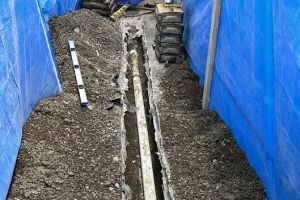
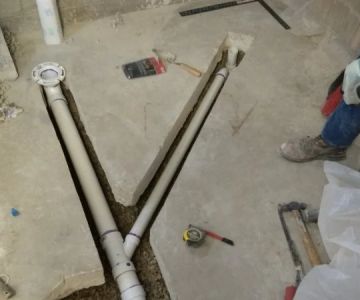





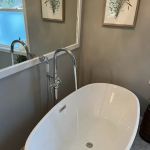 Oakland Plumbing LLC5.0 (17 reviews)
Oakland Plumbing LLC5.0 (17 reviews)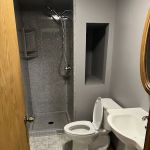 Midwest Plumbing & Service4.0 (7 reviews)
Midwest Plumbing & Service4.0 (7 reviews)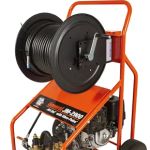 Moberly Plumbing4.0 (117 reviews)
Moberly Plumbing4.0 (117 reviews)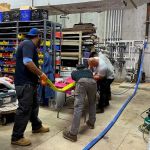 American Trenchless Technologies4.0 (8 reviews)
American Trenchless Technologies4.0 (8 reviews) Tony's Plumbing3.0 (12 reviews)
Tony's Plumbing3.0 (12 reviews)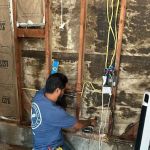 Socal Plumbing Co5.0 (5 reviews)
Socal Plumbing Co5.0 (5 reviews)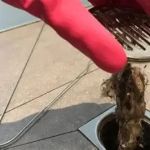 How to Repair a Hairball Clog Without Harsh Chemicals
How to Repair a Hairball Clog Without Harsh Chemicals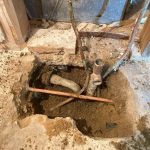 How to Repair a Junction That Is Leaking Under Slab: A Comprehensive Guide
How to Repair a Junction That Is Leaking Under Slab: A Comprehensive Guide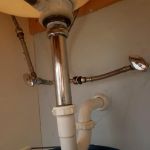 How to Replace a Sink Overflow Tube: A Complete Step-by-Step Guide
How to Replace a Sink Overflow Tube: A Complete Step-by-Step Guide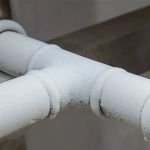 What Causes Frozen Pipes and How You Can Prevent It - Expert Tips
What Causes Frozen Pipes and How You Can Prevent It - Expert Tips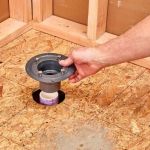 How to Replace a Shower Niche Drain: Step-by-Step Guide for Homeowners
How to Replace a Shower Niche Drain: Step-by-Step Guide for Homeowners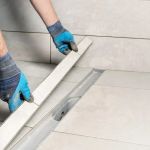 How to Replace an In-Wall Shower Drain: Step-by-Step Guide
How to Replace an In-Wall Shower Drain: Step-by-Step Guide